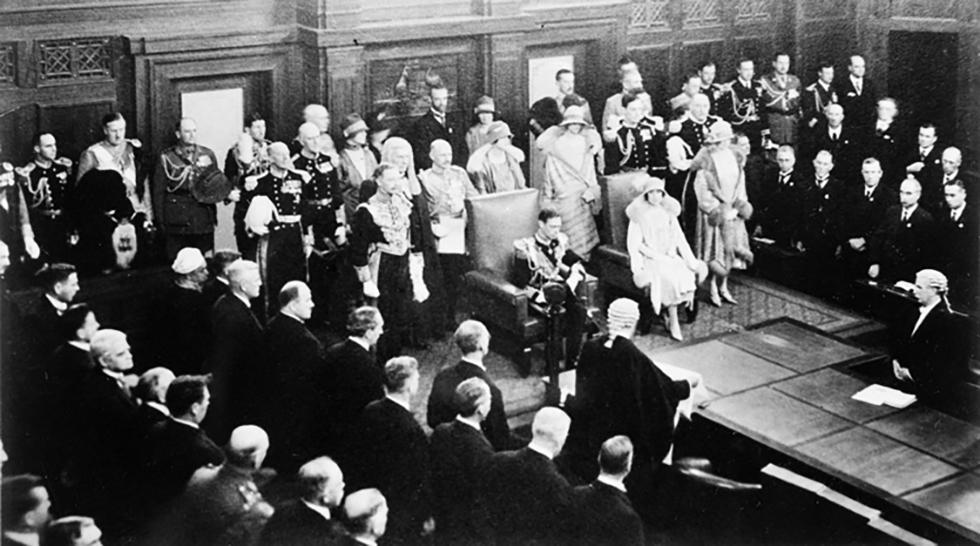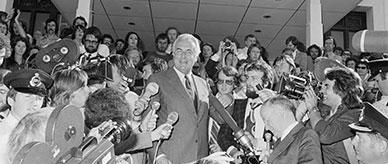


About this record
This is a photograph of the Duke and Duchess of York at the opening of the provisional Parliament House (now Old Parliament House), Canberra, on 9 May 1927. The photograph was taken in the Senate Chamber and shows the Duke and Duchess seated at the head of the Senate table, surrounded by members of parliament, parliamentary staff and other official guests.
Educational value
- Shows an important moment in the history of the Australian parliament – the first parliament was opened in 1901 in Melbourne as a temporary measure until it could be decided where to establish the national capital; after Canberra was founded in 1911, plans were eventually made to build a provisional Parliament House, which was completed by the Department of Works in 1927 and was not replaced until 1988, when the current and permanent Parliament House was opened.
- Shows a gathering of the most prominent members of the Australian and international political and social community of 1927 – some 500 guests were crammed into the building, including Sir Stanley Melbourne Bruce (1883–1967), eighth Prime Minister of Australia, and Dame Nellie Melba (1861–1931), who had earlier sung the national anthem on the steps of the new building, as well as past and present parliamentarians, diplomats and other dignitaries, while an additional 5000 people occupied seats outside.
- Illustrates the central role of the Duke of York, later to become King George VI, in this significant event, highlighting the strong links between Australia and the British Empire at that time – Prime Minister Bruce, in his address at the opening, continually stressed Australia's ties to Britain, saying, 'Today it is our solemn duty to reaffirm ... our devotion to the Crown and Empire'.
- Depicts the event that established Canberra as the nation's capital – until the provisional Parliament House was built, Canberra was a small quiet town, but with the construction of the new building, the population doubled, leading to more construction for housing and other facilities to service the burgeoning community.
- Is one of numerous photographs that were taken to record this historic event for posterity – in addition, the opening was broadcast on radio to Queensland, New South Wales, Victoria and South Australia (reaching over a million listeners) and the proceedings were filmed.
- Illustrates women's clothing fashions of the 1920s – the women in the photograph are wearing the popular art deco fashions of the day, including cloche hats, shapeless shift dresses (widely associated with the 'flappers' of the 'roaring twenties'), fur coats and bobbed haircuts.
Acknowledgments
Learning resource text © Education Services Australia Limited and the National Archives of Australia 2010.
Need help with your research?
Learn how to interpret primary sources, use our collection and more.

